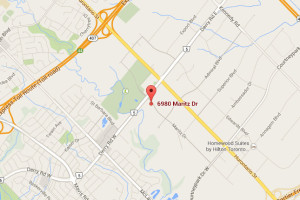SAN Assessment involves analyzing your business needs and how they affect storage requirements. By providing proven business and technical expertise in today’s dynamic storage environment, Future 2000’s SAN will enable you to efficiently allocate IT resources and answer the questions: “How do I choose the right storage solution for my enterprise?”
Future 2000’s SAN Assessment methodology provides a comprehensive framework so customers can establish a strategic roadmap identifying the components and costs associated with SAN technologies, enabling companies to build a high-level business case for implementing a SAN solution.”.
Future 2000 developed the SAN Assessment process to help you address your critical business issues. It is designed to help you:
- Establish priorities for storage-driven business issues, such as cost, storage availability, storage growth capacity, and data protection.
- Identify IT that drive storage requirements, such as servers, operating systems, applications, networks, and existing storage architectures.
- Develop a high-level framework that defines the right SAN technologies, components, and architectural direction for a SAN solution.
- Build the business case for a SAN solution by quantifying the operational cost savings and the return on investment (ROI) that results from implementing specific SAN technologies.
This process will help clearly define your goals and objectives, and identify key business drivers to address with a SAN solution. The methodology ensures that you will be able to identify the best solution, not just a solution.
The SAN Assessment is performed in four phases, each phase comprising a specific set of activities and deliverables. The phases are performed sequentially, with each phase providing input to the next.
Technical Data Collection
This phase establishes priorities for critical storage-driven business issues. Business executives and IT managers are interviewed to understand the requirements, constraints, and relative priority of cost, storage availability, storage growth (i.e., scalability), and data protection for the SAN. The priorities are used to provide a solution framework, influencing the selection of particular SAN technologies, components, and architectures.
Future 2000 collects data on your current IT environment to establish requirements that will guide the design of a high-level SAN solution. This phase includes an inventory of servers, operating systems, applications, networks, and storage technologies such as SAN, network attached storage (NAS), and backup systems
Framework Development
This phase develops a high-level framework for a SAN solution based on your business priorities and storage needs. Framework development defines the functional relationships among the solution parameters and provides a step-by- step process for identifying the most appropriate SAN solution and architectural direction. Your business priorities for performance, storage availability, storage growth (i.e., scalability), and data protection are mapped to relevant SAN technologies, components, and architectures.
This Future 2000 step-by-step process examines critical technical design parameters such as quantity, speed, and size of disk drives; disk subsystem and software functionality; and alternative SAN topologies. This high-level, directionally correct SAN framework is validated against your business requirements and assessed for ROI in the next phase of the SAN Assessment.


